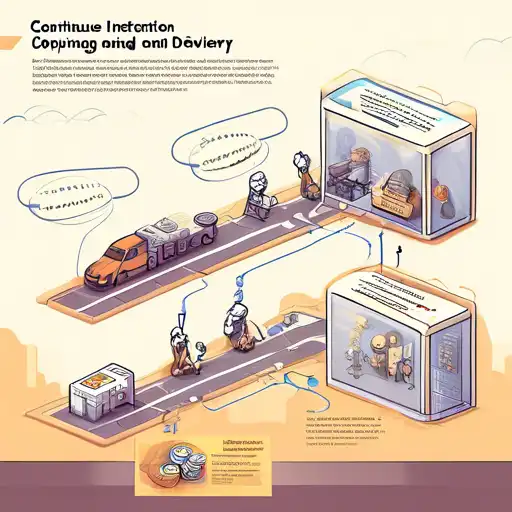What is Continuous Integration and Delivery?
Continuous Integration (CI) and Continuous Delivery (CD) are pivotal practices in modern software development, aimed at improving software quality and delivery speed. CI involves the automatic integration of code changes from multiple contributors into a shared repository several times a day. CD extends CI by ensuring that the software can be reliably released at any time.
The Benefits of CI/CD
Adopting CI/CD practices offers numerous benefits, including:
- Reduced integration problems
- Faster delivery of features
- Higher software quality
- Lower risks and costs associated with releases
These practices encourage developers to integrate their work more frequently, leading to early detection of errors and more cohesive software development.
How CI/CD Works
CI/CD pipelines automate the steps in software delivery, such as initiating code builds, running automated tests, and deploying to a production environment. Tools like Jenkins, Travis CI, and GitLab CI play a crucial role in automating these processes.
Key Components of a CI/CD Pipeline
- Version Control: All code changes are committed to a version control system like Git.
- Build Automation: Tools compile the code into executable artifacts.
- Automated Testing: Ensures that the code meets quality standards before deployment.
- Deployment Automation: Automates the release of software to production environments.
By integrating these components, teams can achieve a seamless flow from development to production.
Best Practices for Implementing CI/CD
To maximize the benefits of CI/CD, consider the following best practices:
- Maintain a single source repository.
- Automate the build and testing processes.
- Keep builds fast and efficient.
- Ensure that every commit is built and tested.
- Make the deployment process repeatable and reliable.
Adhering to these practices can significantly enhance the efficiency and reliability of software delivery.
Challenges and Solutions in CI/CD
While CI/CD offers many advantages, teams may face challenges such as integration complexities, test failures, and deployment issues. Overcoming these challenges requires:
- Investing in robust testing frameworks.
- Ensuring clear communication among team members.
- Adopting incremental changes to minimize disruptions.
With the right strategies, teams can navigate these challenges and fully leverage the power of CI/CD.
Conclusion
Continuous Integration and Delivery are transformative practices that streamline software development and deployment. By automating the integration and delivery processes, teams can achieve faster releases, higher quality software, and more efficient workflows. Embracing CI/CD is essential for any organization looking to thrive in the fast-paced world of software development.
For more insights into DevOps practices, explore our guide on essential DevOps tools.
